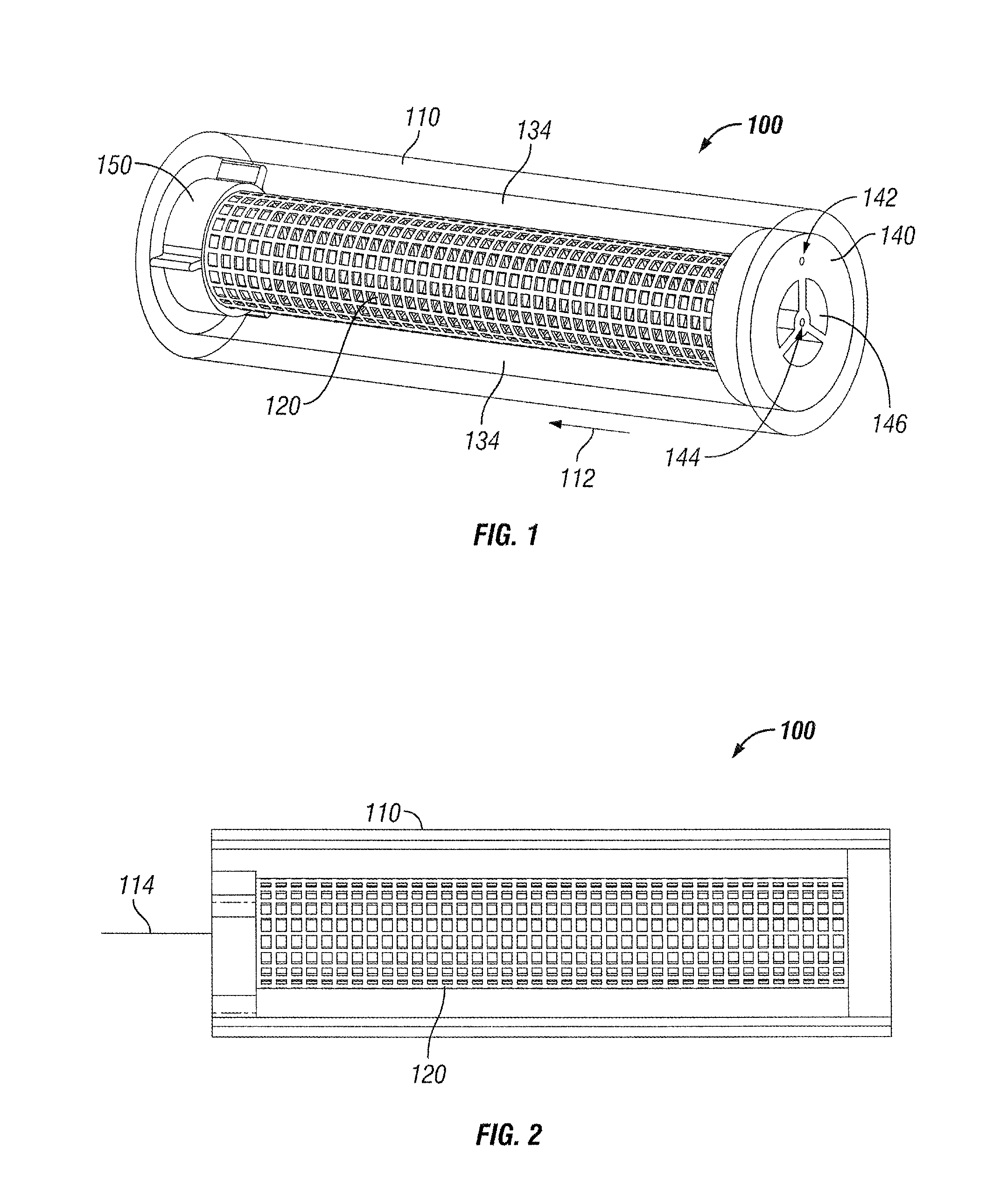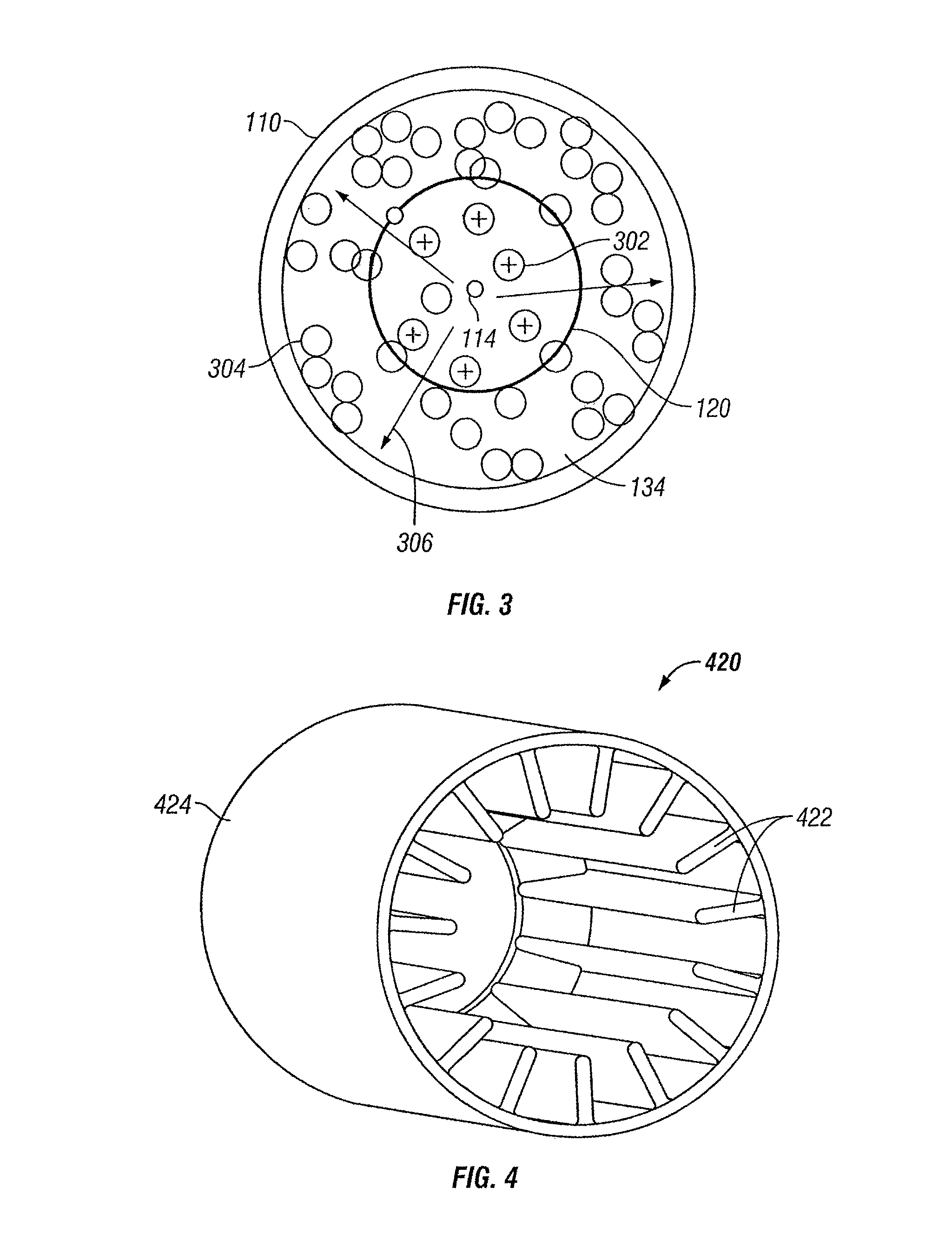Ionic fluid flow accelerator
a technology of accelerator and ionic fluid, applied in the direction of variable capacitor, corona discharge, instruments, etc., can solve the problem of generating more heat than their predecessor devices, and achieve the effect of maximizing efficiency, minimizing arcing, and maximizing alignmen
- Summary
- Abstract
- Description
- Claims
- Application Information
AI Technical Summary
Benefits of technology
Problems solved by technology
Method used
Image
Examples
first embodiment
[0029]FIG. 1 illustrates a three-dimensional perspective view of an ionic air flow accelerator device 100 which occupies a cylindrically-shaped housing 110, hereafter referred to as outer tube 110. FIG. 2 is a side plan view of ionic air flow accelerator device 100. For purposes of showing other structures of ionic air flow accelerator device 100, outer tube 110 is shown as being made of transparent material in FIGS. 1 and 2, but it is understood that it need not be transparent. End-cap 140 is disposed at one end of outer tube 110, and comprises an aperture 144 through which passes a first electrical conductor 114 (shown in FIG. 2). Aperture 144 extends substantially through the entire length of the center portion of cylindrically-shaped housing 110. End-cap 140 also comprises an aperture 142 through which passes a second conductor which is not shown in FIGS. 1 and 2. End-cap 140 further comprises one or more apertures 146 that permit air to enter the interior of ionic air flow acce...
second embodiment
[0033]FIG. 4 is a three-dimensional perspective view of a collector structure for a cylindrically-shaped ionic air flow accelerator. Collector structure 420 comprises a series of conductive radial fins 422 disposed in and attached to a solid, grounded conductive tube 424 that surrounds the emitter (not shown in FIG. 4.) Collector structure 420 functions in a manner similarly to that of metal mesh collector structure 120 (FIG. 1). Grounded conductive tube 424 may provide increased safety. The configuration of radial fins 422 may contribute less resistance to the airflow.
third embodiment
[0034]FIG. 5 is a three-dimensional perspective view of a collector structure for a cylindrically-shaped ionic air flow accelerator. Collector structure 520 comprises a series of conductive radial fins 522 disposed in and attached to open grounded conductive tube 524 that surrounds the emitter (not shown in FIG. 5.) Collector structure 520 functions in a manner similarly to that of metal mesh collector structure 120 (FIG. 1). Open grounded conductive tube 524 allows the moving air to exhaust radially. This embodiment pulls ambient air into the cylindrically-shaped structure from one or both ends.
PUM
 Login to View More
Login to View More Abstract
Description
Claims
Application Information
 Login to View More
Login to View More - R&D
- Intellectual Property
- Life Sciences
- Materials
- Tech Scout
- Unparalleled Data Quality
- Higher Quality Content
- 60% Fewer Hallucinations
Browse by: Latest US Patents, China's latest patents, Technical Efficacy Thesaurus, Application Domain, Technology Topic, Popular Technical Reports.
© 2025 PatSnap. All rights reserved.Legal|Privacy policy|Modern Slavery Act Transparency Statement|Sitemap|About US| Contact US: help@patsnap.com



